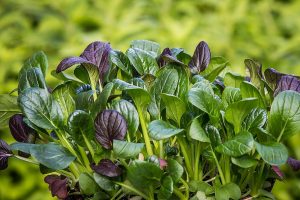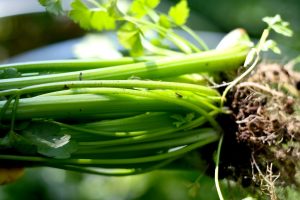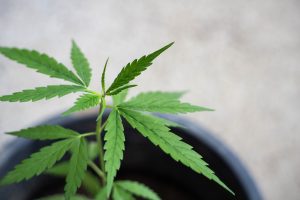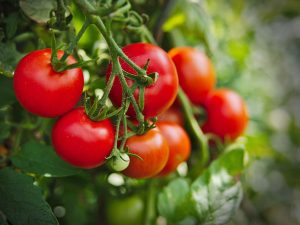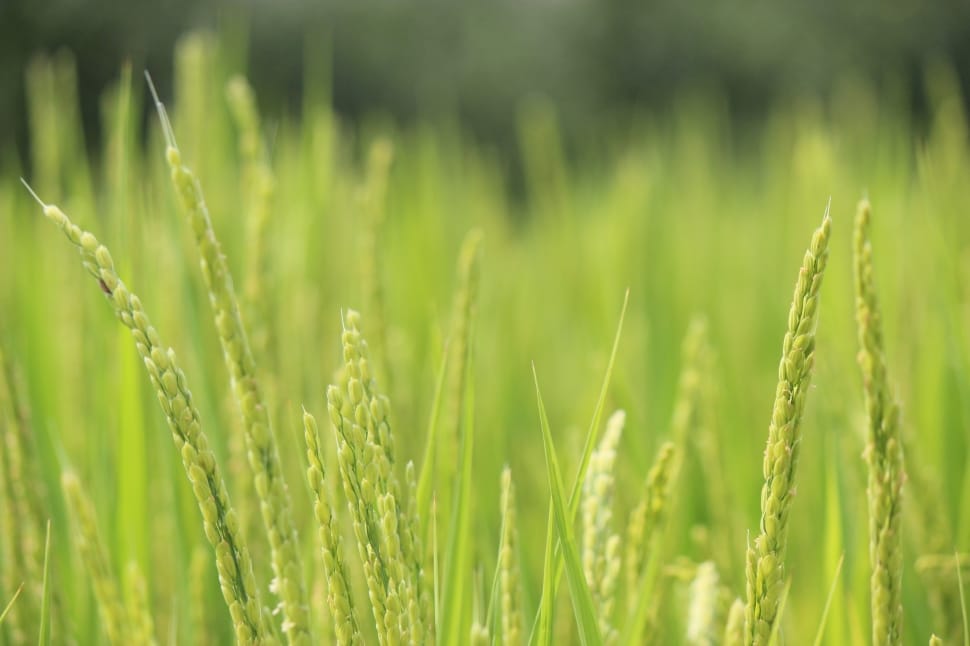
Rice is a staple food for billions of people worldwide. From sushi to stir-fry, rice is a versatile ingredient that can be cooked in a variety of ways. But have you ever wondered how rice is grown? Growing rice may seem like a daunting task, but it’s actually quite simple with the right guidance. In this blog post, we’ll take you through the steps on how to grow rice, from selecting the perfect seedling to harvesting the grains. Whether you’re an experienced farmer or simply wanting to learn something new, this guide will provide you with everything you need to know about growing your own rice at home or on your farm. So let’s get started!
Plan around the rice-growing season
To successfully grow rice, one must plan around the rice-growing season. Farmers typically plant rice from late February through May, depending on the production region. For the best results, purchase rice seeds from a local nursery or gardening store.
Before planting, soak the rice seeds in water for several hours. This helps activate the seed’s growth and development potential. Once the seeds have soaked, prepare the planting area by clearing out any debris and tilling the soil. Long grain rice tends to work best, so be sure to choose a variety that thrives in your local environment.
To plant the germinated rice seeds, make small holes in the soil about a half-inch deep. Place the seeds in the holes and cover them up with soil. Next, saturate the soil slowly with water. Rice is a semi-aquatic crop that needs to be grown in standing water or very wet soil. Flooding helps create these conditions, so make sure to provide enough water for the rice plants to grow.
Finally, make sure to provide the rice plants with warm climates and regular rain for optimal growth. Rice plants grow to a height of 3-4 feet in about 120 days. Apply fish emulsion fertilizer monthly to help the plants grow healthy and strong. Remember, rice is an annual grass plant that thrives in Asia and parts of Africa. By following these steps and planning around the rice-growing season, anyone can grow a successful crop of rice.
Purchase rice seeds from a local nursery or gardening store
To ensure that your rice crop is a success, you will need to purchase high-quality rice seeds from a local nursery or gardening store. When selecting rice seeds, it is important to choose a variety that is suitable for your particular growing conditions. Most rice seed varieties can be purchased online or from a nearby store that specializes in gardening supplies. To get started with your purchase, simply visit your local nursery or gardening center and ask for advice on which seed varieties are best suited for your area. You may also want to consider purchasing Dutch White Clover seeds, which can be planted alongside your rice for added benefits. With the right seeds and growing techniques, you can look forward to a bountiful rice harvest that will be sure to impress both you and your family.
Soak rice seeds before planting
Before planting rice, it’s important to soak the seeds for a significant amount of time. The rice seeds have incredibly hard shells, and soaking helps promote germination. To prepare the seeds, gather at least 28-57 grams of rice to sow and soak them in water for at least 12 hours but not longer than 36 hours. This will help the seeds absorb moisture and ultimately lead to better growth. After soaking, the seeds should be incubated for 24-48 hours until a small 2-3 millimeter radicle grows from each seed. Once the seeds are germinated, they are ready to be planted about a half-inch deep in the prepared planting area with long grain rice. It’s essential to plant the seeds during the rice-growing season and provide them with warm climates, regular rain, and monthly fish emulsion fertilizer for optimal growth. Remember, rice is an annual grass plant that thrives in Asia and parts of Africa, and with proper preparation and care, you can grow your own delicious rice at home.
Prepare the planting area with long grain rice
Once you have planned around the rice-growing season, purchased rice seeds, and soaked them, it’s time to prepare the planting area with long grain rice. Choose a flat or gently sloping location to build a rice paddy. Soils high in clay and silt are ideal for growing rice plants, so ensure the area has a little acidic clay for the best outcomes. Insert your rice seeds about a half-inch deep in the prepared area. Don’t worry about spacing them out too much; just sow a liberal amount of seed. After planting, saturate the soil slowly with water. Rice plants need warm climates with regular rain for optimal growth, so move the bucket to a warm, sunny area and keep an eye on the rainfall amounts. Apply fish emulsion fertilizer monthly to ensure the plants have the nutrients they need. With the right preparation, planting, and care, your long grain rice should be ready to harvest in about four months. Rice is an annual grass plant that thrives in Asia and parts of Africa, so if you’re in one of these regions, you’re in luck!
Plant germinated rice seeds about a half-inch deep
Once you have properly soaked and germinated your rice seeds, it’s time to plant them. Make sure the soil in the planting area has been prepared with long grain rice and is ready for the seeds. Plant the germinated rice seeds about a half-inch deep in the soil, leaving around 6 inches of space between them. This will ensure that the plants have enough room to grow properly.
After planting, slowly saturate the soil with water until the water level almost reaches the surface. This will help to keep the soil moist and provide the seeds with the nutrients they need for optimal growth.
Remember to provide warm climates with regular rain for the best results. Rice plants grow to a height of 3-4 feet in about 120 days. Apply fish emulsion fertilizer monthly to ensure that the plants are getting the nutrients they need to grow healthy and strong.
By following these steps, you can successfully grow rice in your own garden or farm. This annual grass plant thrives in Asia and parts of Africa and provides a valuable food source for many people around the world.
Saturate soil slowly with water
To successfully grow rice, it is important to saturate the soil slowly with water. After planting the germinated rice seeds about a half-inch deep in slow-draining soil rich in nitrogen, it’s time to water the plants. Before watering, ensure that there is no rainfall in the forecast because rice plants should not be overwatered. First, apply a flush irrigation to wet the soil, and then when the plants have developed three leaves, saturate the soil with water. It is essential to keep the water level at two inches above the soil when the rice is first growing and up to four inches when the rice stalks grow above six inches. When adding water to the soil, do it slowly to prevent washing out the seedlings’ roots. Constant water supply is critical to the success of your rice crop. In water-scarce areas, consider using substrates containing peat, compost, or natural soil with a high content of organic material, as they will facilitate rice cultivation by buffering the water. Remember, the plant cannot withstand saturated soil conditions for more than 2-5 days, as it needs air to survive. A slow saturation of the soil with water will keep the rice plants healthy and strong while ensuring a higher yield.
Provide warm climates with regular rain for optimal growth
To ensure optimal growth of your rice plants, it is important to provide them with warm climates and regular rain. As previously mentioned, rice thrives in hot, humid environments with prolonged sunshine and an assured supply of water. You can prepare your planting area to mimic a flooded field with 2-4 inches of standing water per week.
When planting germinated rice seeds, make sure to do so in full sun for the best results. As the plants grow, they will need regular watering to maintain the flooded environment. Keep in mind that rice is a crop that requires a lot of moisture in order to thrive.
Throughout the growing season, be sure to apply fish emulsion fertilizer monthly to provide necessary nutrients to your rice plants. With proper care and attention to the growing conditions, your rice plants will grow to a height of 3-4 feet in about 120 days.
Remember, rice is an annual grass plant that is typically grown in Asia and parts of Africa. It is best suited to regions with high humidity and prolonged sunshine, so plan around the rice-growing season in order to ensure that your plants have the warm, wet environment that they need to thrive. With these tips, you can successfully grow your own rice crop.
Rice plants grow to a height of 3-4 feet in about 120 days
Now that you have planted your rice seeds and provided them with the right environment, it’s time to sit back and watch them grow. Rice plants typically grow to a height of three to four feet in about 120 days after planting. As the rice plant grows, farmers irrigate the rice fields to ensure that they receive enough water. It is crucial to check that your rice is ready for harvest, which typically occurs about four to six months after planting.
During the growth of the rice plant, it can be divided into three stages: vegetative, reproductive, and maturity. The vegetative stage occurs from seed germination to PI, the reproductive stage occurs from PI to flowering, and the maturity stage occurs around 110-120 days after transplantation. Levelling the fields contributes to uniform plant growth, which can improve productivity.
When it’s time to harvest the rice, the height of harvested rice plants should be between 15-25 inches. The average yield of rice cultivation is around 1-2 tons per hectare within 60 days after harvest. In some cases, medium maturing rice varieties such as FARO 21, 26, 29, and 52 (WITA 4) can also be used for cultivation.
Overall, growing rice takes patience and dedication, but the rewards of a bountiful crop make it all worthwhile. By following the steps outlined in this guide, you can grow healthy and robust rice plants that will provide a delicious and nutritious source of food for your household. Remember to provide your plants with regular care, including irrigation, fertilization and watch them grow into beautiful towering plants in no time.
Apply fish emulsion fertilizer monthly
Now that your rice plants are growing steadily, it’s time to consider how to keep them thriving. Applying fish emulsion fertilizer monthly is a great way to ensure that your rice plants receive the nutrients they need to produce a healthy yield. Simply mix 1/4 cup of nitrogen-rich fish emulsion fertilizer and 1/4 cup of phosphorous-rich fertilizer, such as bone meal or rock phosphate, in a container with a secure lid. Stir the mixture daily for a few weeks to ensure that the fertilizer blends well. Next, add 2 cups of the blend to a spray bottle and dilute it with water. If you have small houseplants or herbs, simply spray the mixture onto the plants. For rice plants, apply the fertilizer once a month to ensure optimal growth. Fish emulsion is made from by-products of the seafood industry and is a natural source of nutrients that’s great for soil enrichment. By following this step, you will positively impact the growth of your rice plants, resulting in a healthy and bountiful harvest.
Rice is an annual grass plant that thrives in Asia and parts of Africa
When growing rice, it’s important to know that it is an annual grass plant that thrives in Asia and parts of Africa. This means that it needs specific conditions to grow successfully. In order to ensure that your rice crop flourishes, make sure to plan around the rice-growing season, purchase high-quality rice seeds from a local nursery or gardening store, soak the seeds before planting, and prepare the planting area with long-grain rice. It’s recommended to plant germinated rice seeds about a half-inch deep and to saturate the soil slowly with water. Rice plants grow to a height of 3-4 feet in about 120 days, so providing warm climates with regular rain for optimal growth is vital. Additionally, applying fish emulsion fertilizer monthly can promote healthy growth. Keep in mind that although rice is originally from Asia and Africa, it has been exported and is commonly grown in many other regions as well. By following these steps, you can confidently grow your own successful rice crop.

